Kumbhalgarh Fort is carrying second most historic significance after Chittorgarh for the kingdom of Mewar. By road, you have to drive just 82 kilometers north west to Udaypur, Rajasthan. The Kumbhalgarh Fort was occupied till late 19th century CE. But fortunately, it is now open for public. In 2013, UNESCO declared Kumbhalgarh Fort as a World Heritage Site along with Chittorgarh, Jaisalmer and 3 other forts of Rajasthan.
Kumbhalgarh is situated in the high mountains of Aravalli range at a height of 1,100 meter above the sea level. Rana Kumbha, the probable rebuilder of the fort, had used it as a divider between two kingdoms, Mewar and Marwar. Being on the amazing green hilltop, it is now a traveler’s attraction. And because of the same reason, it was hard to invade and penetrate on those times.

Construction of the Kumbhalgarh Fort
Kumbhalgarh Fort may have seen the period from the King Samprati of Maurya Dynasty to the Rana Kumbha. It is believed the fort was originally built in 6th century (CE) by King Samprati, the grandson of Ashoka first. However, it is hard to establish so for the lack of enough evidence. The fort didn’t have enough historic significance till Alauddin Khilji invaded in early 14th century.
King Samprati had built a military camp there and named that fort as ‘Macchindragarh’.
Rana Kumbha had rebuilt Kumbhalgarh Fort in the 15th century for it’s geographical advantages. Since then it has been the army base of Sisodia Rajput Dynasty. It was a place to refuge for Mewar royal family in time of dangers. The Chittorgarh Fort were attacked and seized many times, especially by Mughal emperors Humayun and Akbar. Natural hills and it’s 36 km perimeter walls of the fort brought the extra line of defense from the enemies.
However, during his era of 1433 to 1468 CE, Rana Kumbha had built about 32 forts out of 84 total forts in Mewar. Undoubtedly, Kumbhalgarh Fort was the most largest, decorated and protected.
It took 15 years to build the magnificent fort. Rana Kumbha spent most of his reign here only. Rana used the fort for his strategic victories against the attacks of Ahmed Shah I and Mahmud Khalji. Such victories dignified Rana Khumba as ‘Maharana Kumbha’.
Legend of the longest wall of India
There is a popular legend on Maharana Kumbha and the Fort of Kumbhalgarh.
Rana Kumbha got a Curse that he can never complete a fort for himself. But the King didn’t paid attention towards that; and started the construction of the Kumbhalgarh Fort wall. But whenever they started, it fell on the same night. Then a holy saint ‘Mer Baba’ met the king and told him human sacrifice is the only way out of this curse.
But the problem came when no one volunteered for this; later on, the holy saint himself sacrificed his head.
But, he laid three conditions/demands before his sacrifice.
- First condition was allowing him to ride a horse. Behead him (the saint) wherever the horse stops and build the first gate at that place. Rana Kumbha agreed to that and accordingly the gate was prepared and named ‘Hanuman Pol’.
- The second demand was to construct the palace at the place where his body fell on the ground.
- His last condition was that the palace would be named after him. Hence Rana Kumbha named the palace as ‘Kumbhalmer Fort’ (Kumbha and Mer) as per the wish of the saint.
History of Kumbhalgarh Fort
The royal family of Mewar had always used the Fort of Kumbhalgarh as a strategic place to hide during various attacks. Chittorgarh Fort was captured many a time. But the Sisodia family managed to keep hold on rest of Mewar, operating from Kumbhalgarh. Even sometimes, they fought and recaptured Chittorgarh. So, capturing Kumbhalgarh Fort was the key to rule on the entire state of Mewar. Hence the fort itself have witnessed and suffered many attacks.
Ahmed Shah I of Gujarat attacked the fort in 1457 but failed. Later on, Mahmud Khalji also tried to capture the fort in 1458-59 and in 1467 CE. His multiple efforts also went in vain. Rana Kumbha was good enough to utilize the location advantage to a good effect and protect the fort.
Finally in 1576, Akbar’s general Shabhbaz Khan succeeded to take control of the fort from Maharana Pratap Singh, through the Battle of Haldighati. Later the fort was recaptured by Maharana Pratap in 1585. Kumbhalgarh Fort is also famous as the birth place of Maharana Pratap.

Important Structures of Kumbhalgarh Fort
Built at around 3,600 feet above sea level in the lap of Aravalli range, the center of attraction is the 36 km long fort boundary wall. Further, the 15 feet wide wall is good enough to accommodate two cars to move together. Hence, Kumbhalgarh Fort wall is also referred as ‘The Great Wall Of India’. Also probably it is the second longest wall of the world after ‘The Great wall of China’.
The fort is also among the largest complexes of the world and it is the second largest fort after the Chittorgarh Fort of Rajasthan.
The seven gates (‘Pol’ in local language) are:
- Ram pol, the main entrance of the fort
- Arait pol,
- Hanuman pol,
- Hulla pol,
- Bhairon pol,
- Nimboo pol,
- Paghara pol.
Inside the fort You’ll find see many dark congested stairs; probably a strategic move to obstruct the invading army. From the top of the fort walls, the view of hills and jungles will surely amaze you. Apart from the greenery, you can also see the sand dunes of the Thar desert.
Monsoon is the best season to visit the Fort of Kumbhalgarh. Kumbhalgarh Fort Badal Mahal view is just a paradise with lot more greeneries to see during the monsoon. Enjoying the passing clouds will just mesmerize you.
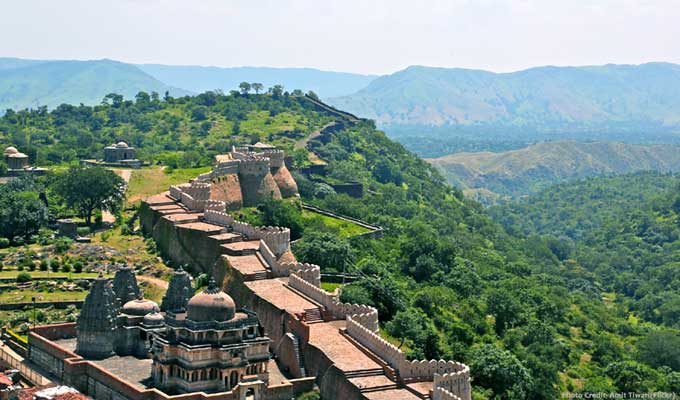
Water management and reservoirs
The fort has one of the best water management and water harvesting facilities. On the western side, Lakhola tank build by Rana Lakha during 1382-1421 CE, is a noticeable part of it. The 5 km long tank is 100-200 meter wide and up to 60 meter deep.
Shahbaz Khan, the general of Akbar, had also built a ‘bavdi’ (or stepwell) after he captured the fort in 1578.
Hindu Temples
The 15th century built Lord Shiva Temple is also an important part of the fort. 24 strong pillars are supporting the round dome of the temple. A statue is Nandi, is placed at the entrance of the temple. The temple sanctum contains a 5 feet long Shiva Lingam cast in black stone. According to the temple inscriptions, Rana Sanga had renovated the temple later on.
However, the Ganesh Temple, built on a 12 feet platform, is probably the oldest of all the temples inside the fort.
Jain Temples
You’ll also see quite a few Jain temples inside the fort premises. Most of them are believed to be built in 16th century CE. Some of the important Jain temples are:
- Parsva Natha temple
- Bawan (means, fifty two) Jain temples
- Golera Jain temple
- Kheda Devi temple
- Surya Mandir (Sun temple)
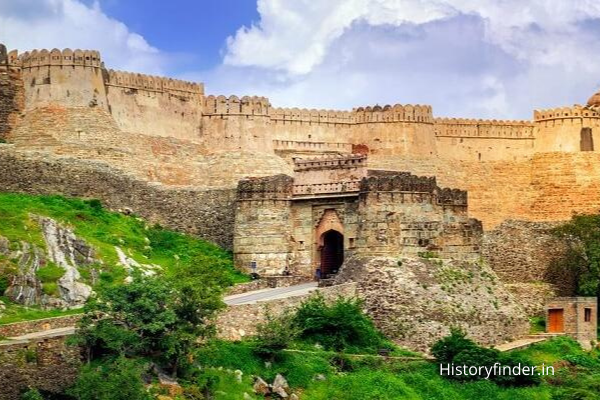
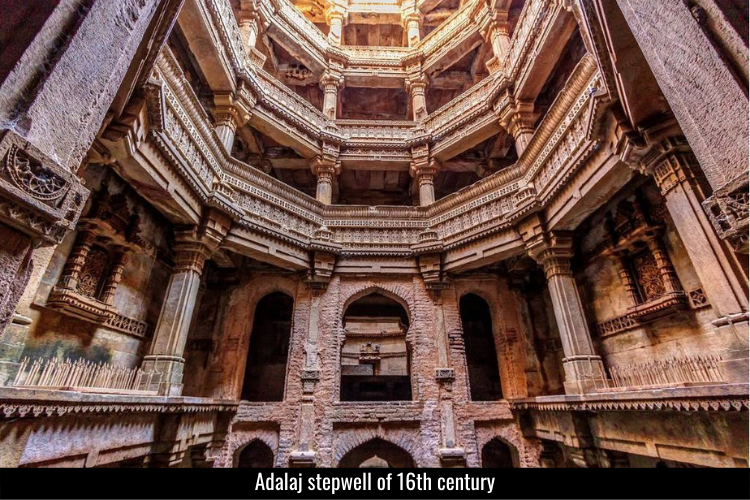
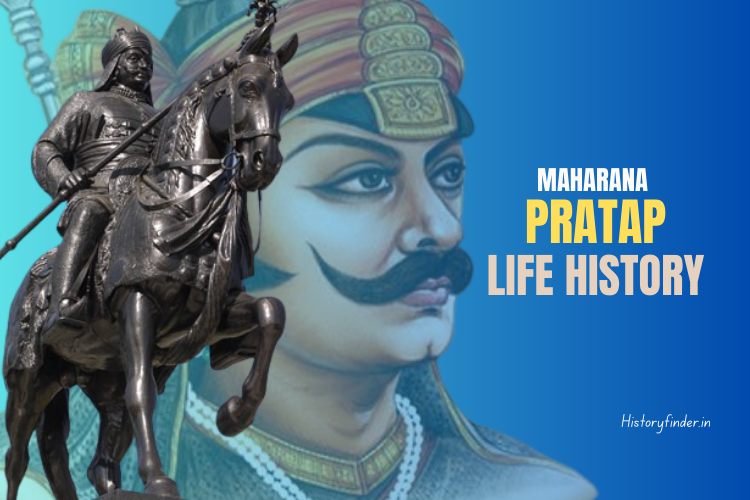
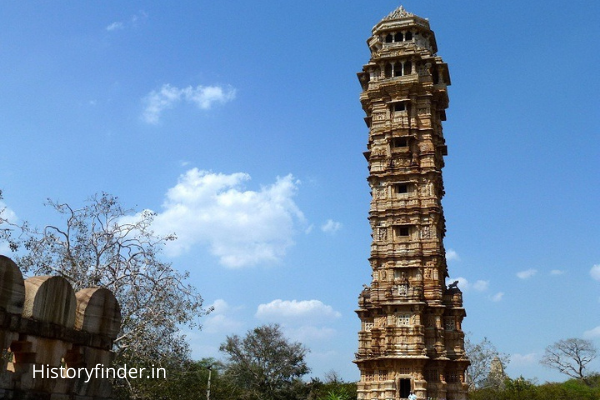
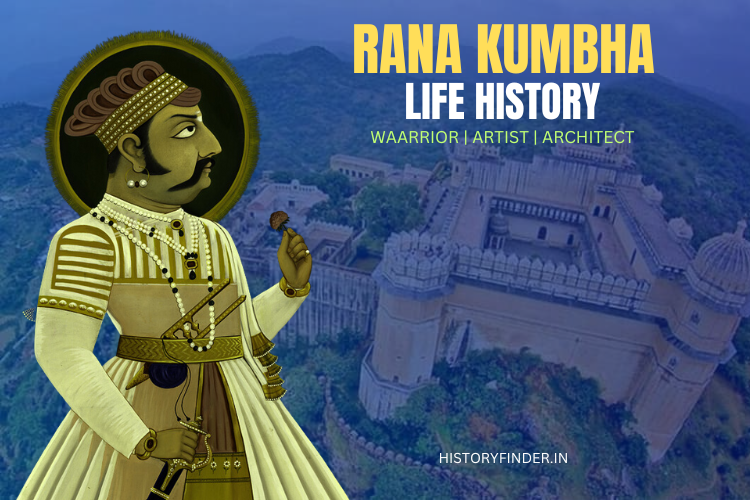
Pingback: Rana Kumbha of Mewar: a historic ruler of 15th century - History Finder
Pingback: Maharana Pratap Singh, the brave Rajput warrior - History Finder
Pingback: Vijay Stambha of Chittorgarh, Rajasthan - History Finder
Pingback: History of Jaisalmer fort Rajasthan - History Finder
Pingback: Chittor Fort - History Finder